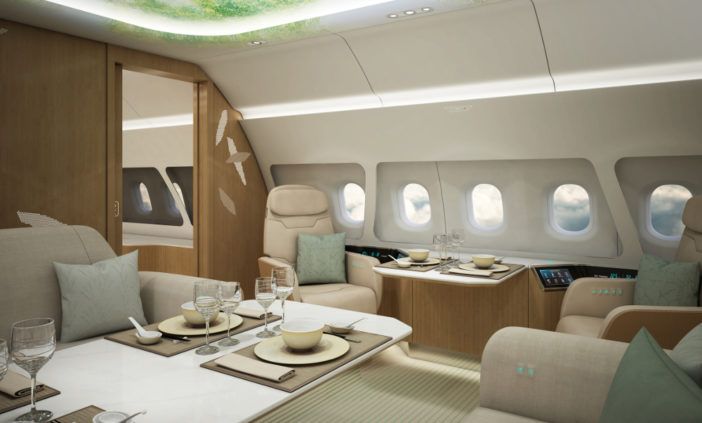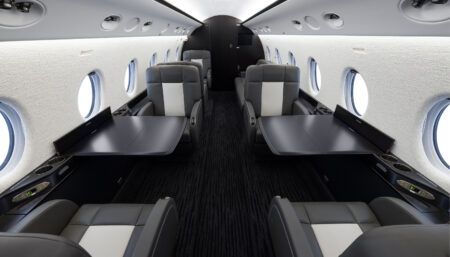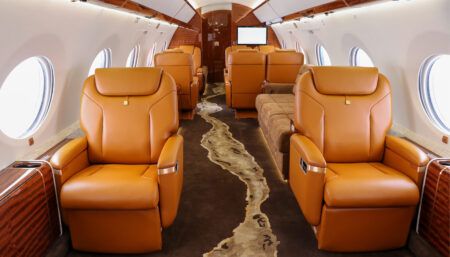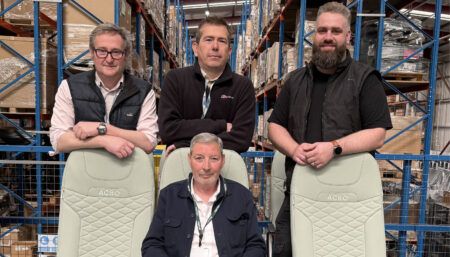What can be done to reduce the environmental footprint of interior completion and refurbishment? Providers share their strategies for the supply chain, renewable energy and more, as well as commenting on some of the challenges to overcome.
One area that completion and refurbishment providers could focus on to reduce their environmental footprint is the supply chain. Mark-André Mann, supervisor of interior solutions at Aero-Dienst, suggests using locally produced materials to avoid global shipping, as well as opting for reusable or sustainable packaging. For example, Aero-Dienst uses stone from a local quarry for flooring, which Mann notes reduces the company’s carbon footprint while maintaining a high standard of luxury.
Mann also sees opportunities to use recycled fabrics and fillers, or products produced from natural fibres – such as pineapple leather. He adds that using renewable energy sources such as solar panels in operations can also enhance sustainability.
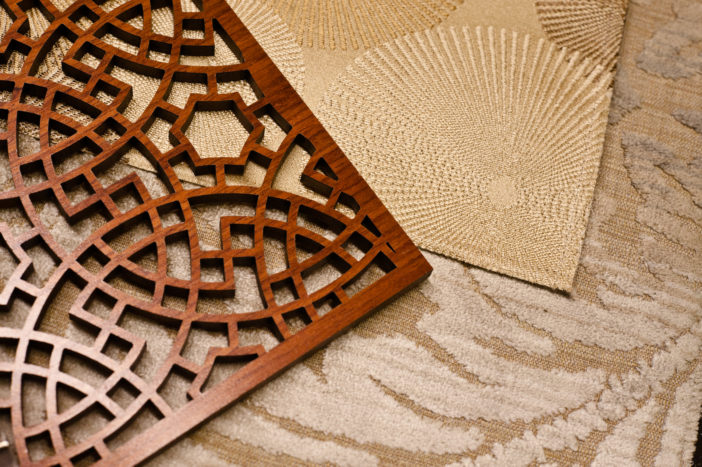
Weight and durability
On the subject of material selections, Annika Svore Wicklund, senior design director at Greenpoint Technologies, brings up several considerations. She believes lightweight interior elements made through eco-friendly processes may improve sustainability, as may materials that are long-lasting and easy to replace. She has seen some innovations cross over from the automotive industry, including certain leathers.
Printed film
Wieland Timm, director of VIP and special-mission aircraft sales at Lufthansa Technik, sees environmental benefits in using printed films in place of exotic wood veneers for cabin monuments. “Their uniform surface pattern makes them much better suited for partial surface repairs,” he says. “On a narrow-body VIP aircraft, print film surfaces can save up to several hundred kilograms of weight compared with real wood veneers.”
Timm recommends changing textiles and seat covers to lighter alternatives like Ultraleather, Ultrasuede or fabric. Lufthansa Technik included some of these in its Nature’s Touch concept.
“Recycling of interior materials is still rather limited these days,” Timm adds, suggesting a focus on durability can also improve sustainability. “The longer a seat surface, carpet or veneer, for example, retains its
high-quality look and feel as desired by the owner or operator, cost- and material-intensive repairs or replacements can be avoided. This helps reduce the ecological footprint over the lifecycle of the interior.”
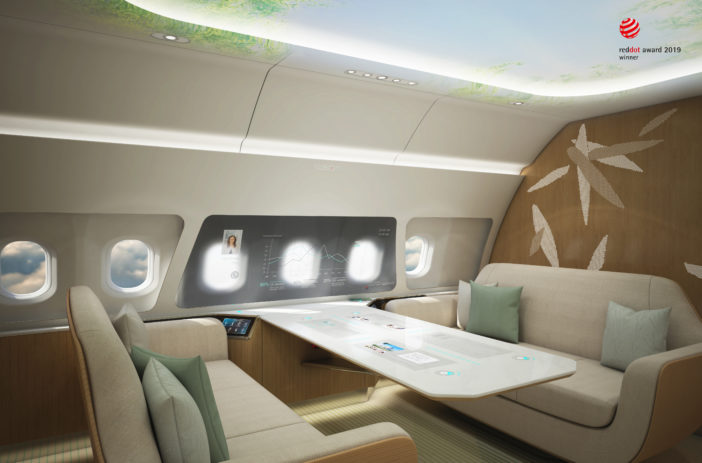
Limited availability
Eric Gillespie, executive vice president of Flying Colours, sees some advancement in sustainable materials, including vegan leather, new bio-based materials, and carpets using recycled materials. “We are exploring how we can use these,” he says. “There is still a limited selection of sustainable interior products, and when you find them, the product is not always available in the quantities needed.”
Like Aero-Dienst, Flying Colours tries to source materials locally. Gillespie notes that LED lights, which “last longer and reduce power consumption”, are popular. “Sustainability for us is more about sustainable business practices than actual materials at this point,” he adds. “But we believe that is going to change as new offerings come to market.”
Certification challenges
The experts share that flammability and smoke density regulations can present a challenge for alternative sustainable materials. “We are always focused on flammability and always need to test whether these products meet the required standards,” Gillespie says.
“Some natural raw materials have to be chemically treated [to achieve material certification], a process that often outweighs or offsets the usually sustainable raw material characteristics,” Timm notes. “Therefore, the choice of materials must be evaluated from various perspectives, the certification process being one of them.”
Svore Wicklund believes the industry might soon overcome some of the challenges around materials. “Progressing technologies and collaboration with material manufacturers enable the development of materials and allow elements once unsuitable, unsustainable or unattainable to be more readily available,” she says.
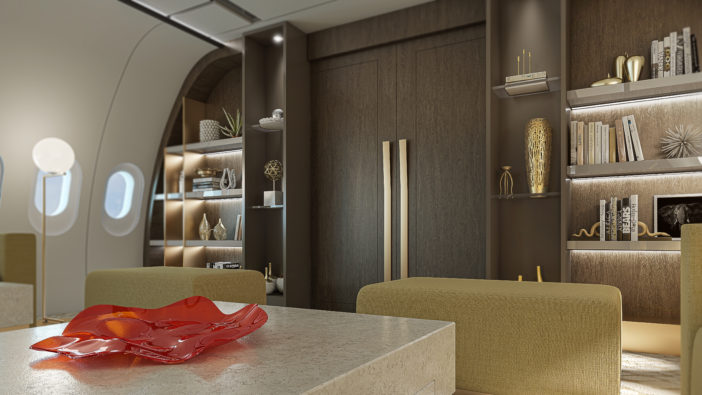
Is the demand there?
Gillespie says most Flying Colours customers view jet interiors as a lifestyle statement but are less interested in making a statement on sustainability. “The North American market, which makes up most of our customer base, has not shown high demand for a sustainable interior,” he says. “It is changing, though. The younger generation wants to know more about the options, and we see that OEMs are focused on creating environmentally ethical products and delivering sustainable options. As we work closely with them, we are inevitably going to be working with sustainable materials. Our design team is always looking out for sustainable opportunities, concepts and materials, and we will happily include them in a design where appropriate.”
Mann of Aero-Dienst also finds variable demand. “It would be helpful if the existing possibilities were promoted more strongly,” he says. “Many customers don’t know about sustainable products. I see the OEMs as an important factor here, as they can set standards.”
Greenpoint has seen interest increase, particularly from completion managers and key influencers who
track industry progress. “Materials continually evolve to follow the aesthetic trends and interests of our client base,” says Svore Wicklund. “Sustainability certifications can be helpful in promoting these materials to clients by providing assurance certain standards are being met.”
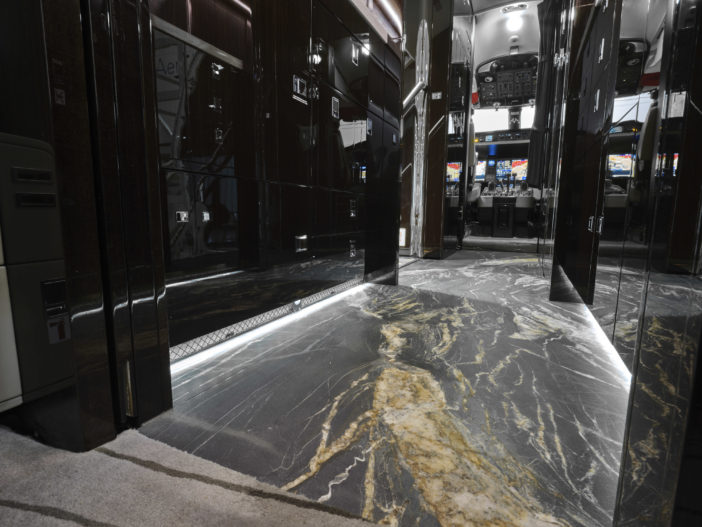
Governmental matters
Sustainability influences material selection for some of Lufthansa Technik’s European government customers. However, for customers in Asia and the Middle East, its less of a deciding factor, Timm shares. “Most customers from these regions focus on the greatest attainable luxury and state-of-the-art technologies,” he says. “Aspects such as sustainability are more of a side note.”
Governments, Flying Colours’ Gillespie thinks, could influence jet owners to look more at sustainability. He suggests there could be tax breaks on aircraft deemed to meet a benchmark. Industry advances could also become persuasive, he says: “If sustainable interiors become cost-effective; offer the same look, feel and durability; and can be personalised; then I’d expect more uptake.”
This feature was written by Marisa Garcia and first published in the July 2023 edition of Business Jet Interiors International


